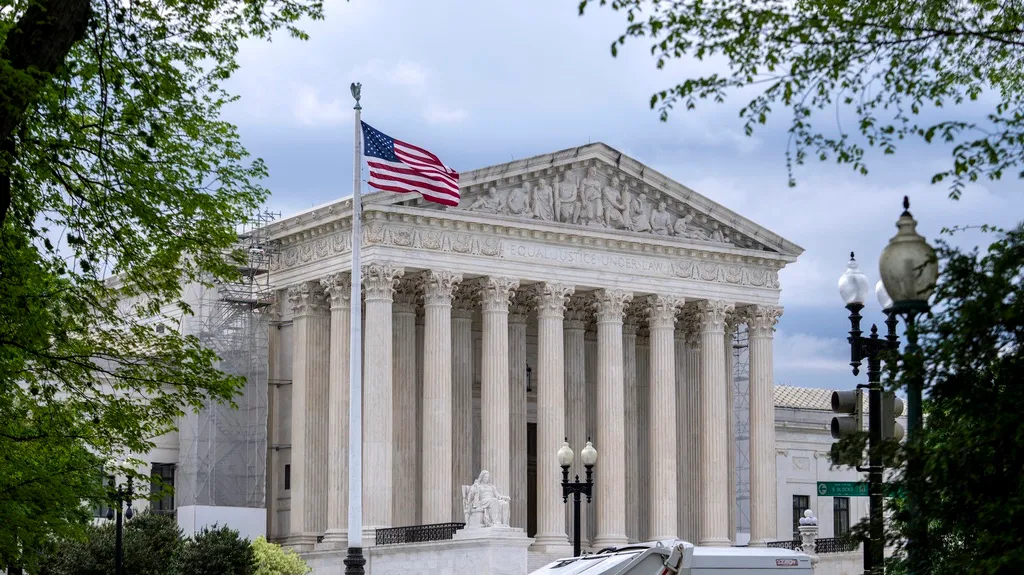June 26, 2013
Obama Wants New Fuel Efficiency Standards
Kilian Melloy READ TIME: 3 MIN.
America is slowly moving toward cleaner sources of energy and using less of it overall. President Barack Obama's plan to fight climate change will accelerate those trends.
The measures aim to reduce emissions of carbon dioxide from power plants, increase America's reliance on renewable energy sources and make trucks, homes and businesses more efficient.
Some parts of the plan will take months to work out and years to go into full effect. The most ambitious part of the plan seeks to rein in one of the biggest sources of carbon dioxide: coal-fired power plants.
Obama will direct the Environmental Protection Agency to develop standards that limit power-plant emissions of carbon dioxide. States would then be able to create rules to comply with the standards.
Obama also seeks to increase funding for clean energy research by 30 percent to $7.9 billion and make $8 billion in federal loan guarantees available to projects that could help capture and bury the carbon dioxide produced at power plants.
Here's how the plan will likely affect companies and consumers:
- UTILITIES AND COAL PRODUCERS
Power plants account for 40 percent of the nation's carbon dioxide emissions, and most of those emissions come from burning coal. To reduce these emissions, power companies will have to run coal plants less often, install equipment that captures carbon dioxide and in some cases shut down plants that become too expensive to operate.
The cost to make these changes are likely so great that utilities would instead generate more power with natural gas, nuclear, wind and solar power, which will become comparatively less expensive and more profitable.
As a result, very few, if any, new coal-fired plants will be built.
The stock prices of the nation's biggest coal miners, including Peabody Energy Corp., Alpha Natural Resources, Inc. and Arch Coal, Inc., have fallen more than 10 percent over the past two days as details of Obama's plan trickled out.
The financial effect on utilities that rely heavily on coal, such as NRG Energy and First Energy, is unclear. While coal-fired power will become more costly, that will be offset by higher electricity prices.
The plan offers clear benefits to natural gas producers such as Exxon Mobil and Chesapeake Energy and to utilities such as Exelon, Entergy and Calpine, which generate large amounts of electricity using low-carbon sources like nuclear power and natural gas.
- RENEWABLE ENERGY COMPANIES
By directing the Department of Interior to accelerate permits to clean energy developers who want to use public land, Obama will make it less expensive for companies to build wind, solar and geothermal energy projects.
This will help companies that provide equipment for, build and finance large wind and solar farms, such as First Solar, SunPower, General Electric and Siemens.
- ENERGY EFFICIENCY
Companies that install windows, insulation and heating and cooling systems stand to benefit from Obama's plan, which will give homeowners and businesses incentives to invest in energy-efficiency improvements. While the upfront costs can be high, the long-term savings can be significant.
Obama also wants the EPA to develop new fuel efficiency standards for heavy trucks, which are the second-largest source of greenhouse gas emissions in the transportation sector after cars. Obama implemented new fuel economy standards for cars through 2025.
These new standards for trucks would go into effect for trucks made in 2018 and beyond. Engine-makers and parts suppliers that succeed in developing fuel-efficient technologies could benefit. While trucking companies may face higher equipment costs at first, their fuel bills will decline.
- ELECTRIC CUSTOMERS
Homeowners and businesses will likely pay more for electricity because the nation will be relying less on coal, which has historically been the cheapest way to produce electricity.
But more efficient homes and appliances are helping reduce energy consumption, which will likely offset at least some of the higher electricity cost.
Hugh Wynne, an analyst at Bernstein Research, estimates that a 20 percent nationwide reduction in carbon dioxide emissions would increase retail power prices by about 1 cent per kilowatt hour, or 9 percent. At current rates of electricity use, that would add $9 or so to an average American's monthly bill. Obama's plan seeks to reduce carbon dioxide emissions by 17 percent from their 2005 level by 2020.
Nick Akins, CEO of American Electric Power, one of the nation's largest utilities, said in an interview Tuesday that as long as utilities like his are given enough time to transition to a cleaner fleet of power plants, Obama's plan can be carried out "without a major impact to customers or the economy."
Kilian Melloy serves as EDGE Media Network's Associate Arts Editor and Staff Contributor. His professional memberships include the National Lesbian & Gay Journalists Association, the Boston Online Film Critics Association, The Gay and Lesbian Entertainment Critics Association, and the Boston Theater Critics Association's Elliot Norton Awards Committee.







